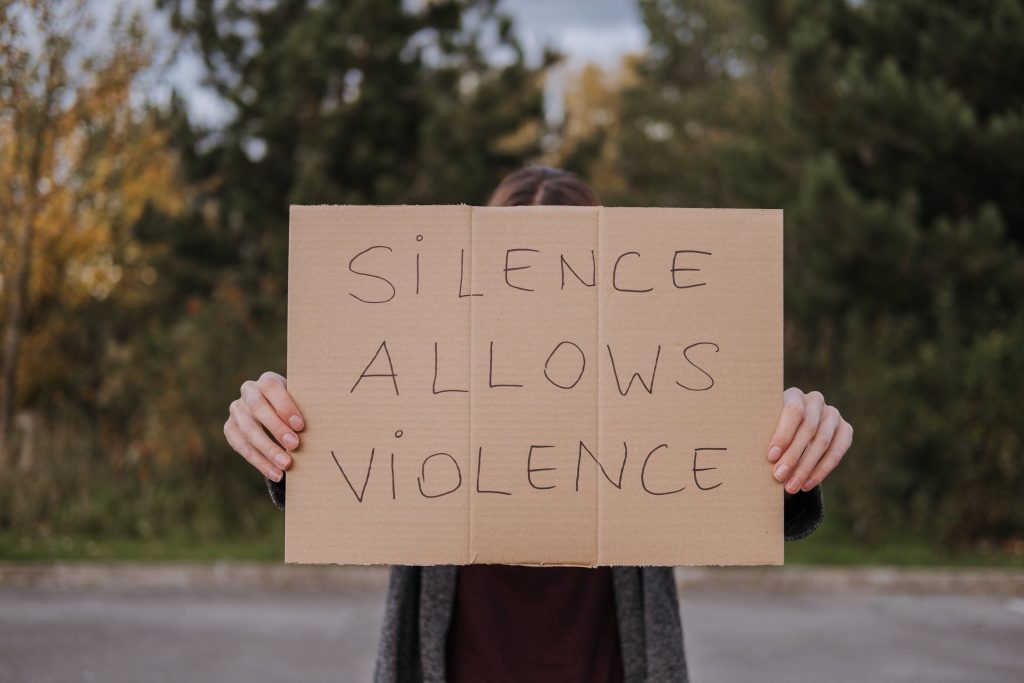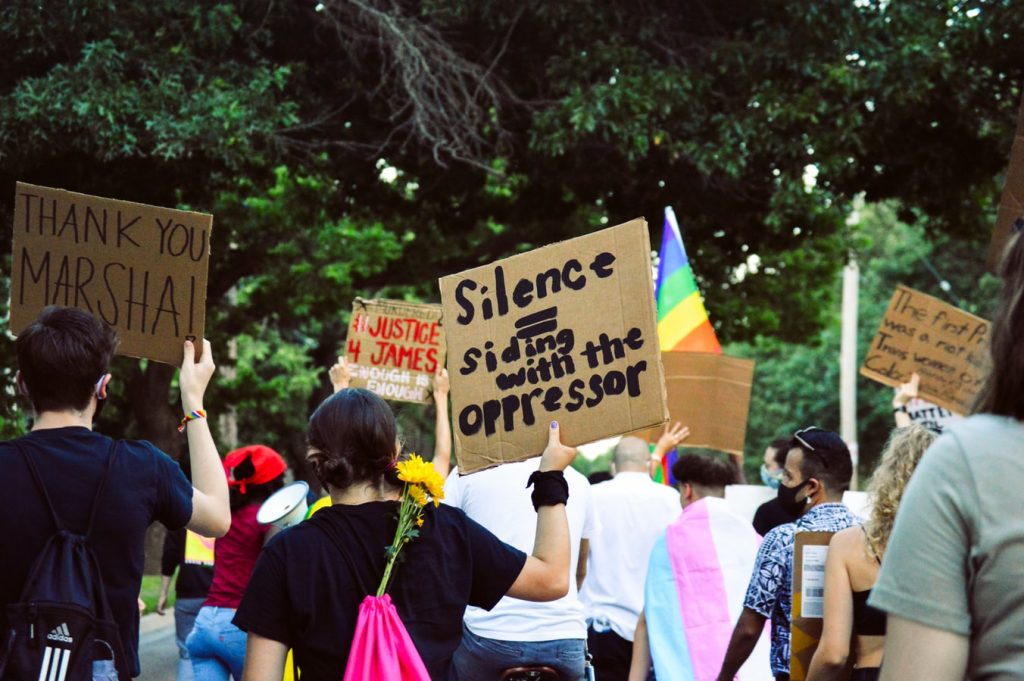Discrimination at work: everything you need to know | Read Time 5-7 Minutes.
Table of Contents:
2. What Does Discrimination Mean?
3. Discrimination At Work – Employment Laws Which Protect You?
4. The Types Of Discrimination Which Can Arise At Work
5. Where Can Discrimination Law Apply?
6. 8 steps to deal with discrimination at work.
7. The effects of discrimination at work?
8. Why Is It So Important To Stand Up Against Discrimination?
“No one is born hating another person because of the colour of his skin, or his background, or his religion. People must learn to hate, and if they can learn to hate, they can be taught to love, for love comes more naturally to the human heart than its opposite”
Quote taken from Nelson Mandela, Long Wal to Freedom
Discrimination
Every individual, regardless of their background or ethnicity, should be free from discrimination, judgement, and attitude at work. In the UK today, there is a systemic, historical bias that favours certain individuals. Not only does this affect ethnic minorities, but a whole range of individuals who have protected characteristics, such as people of the LGBT+ community and individuals with physical and mental disabilities. Whilst data and research present that workplace discrimination is on the decline, it is still very much present in society.
Unfortunately, it is a common misconception that workplace discrimination only occurs whilst an individual is at work. It can happen at every stage of an individual’s career for example in the recruitment, application and interview stage. Therefore, it is essential that people understand how to identify discrimination at work, report it correctly and if need be, escalate the matter to be dealt with legally. Despite great strides forward to prevent discrimination, it continues as an issue in the workplace. Therefore, this article outlines everything you need to know.

What does discrimination mean?
Discrimination is the unfair treatment of a person because they have certain protected characteristics. People may be discriminated against on a range of factors such as sexual orientation, race, class, gender age or religion. These forms of discrimination, unfortunately, translate into the workplace.
Discrimination at work – employment laws which protect you
Many LGBT employees still face anti-LGBT discrimination at work. Stonewall’s study revealed that LGBT employees still do not feel comfortable enough to disclose their identity at work, and often are subject to abuse, with incidents ranging from offensive words to social media posts. An astonishing statistic also revealed that transexual people are 6 times more likely to be physically attacked at work than non-trans LGBT people. No matter what the sector, employers can protect employees by taking strategic change. Currently, LGBT+ individuals and others are protected by the Equality Act 2010. The Equality Act 2010 enshrines in law that it is illegal to discriminate against protected characteristics. The Equality Act 2010 was formed to protect people from discrimination, harassment, and victimisation. The protected characteristics in the Act include:
1. Age
2. Disability
3. Gender Reassignment
4. Marriage and civil partnership
5. Pregnancy and maternity
6. Physical, mental, intellectual, or psychiatric disability
7. Race, colour, national extraction, or social origin
8. Religion or belief
9. Sexual orientation
For more information on the Equality Act 2010, please click here.
“The world is a dangerous place; not because of theose who do evil, but because of those who look and do nothing”
Quote taken from Albert Einstein

The types of discrimination which can arise at work
Discrimination in the workplace is based on certain prejudices and occurs when employees receive unequal and unfair treatment because of their certain protected attributes. Under the Equality Act 2010, there are four categorised types of discrimination which include:
Direct Discrimination
Direct discrimination refers to the actions of treating an individual differently (often unfavourably) due to their particular physical or mental characteristic, such as age, disability, or gender. Not only is the unfair treatment morally unacceptable in the workplace; it presents a legal matter in the context of employment law. An example of direct discrimination at work could be:
Let us say a male employee informs their employer that they are planning for major surgery, allowing them to identify as a woman because it is causing them severe depression. After having a conversation with the employer, the employer attempts to relocate the employee to a non-client facing role, against the employees’ wishes. This is a form of direct discrimination.
Indirect Discrimination
Indirect discrimination occurs when a company’s policies, rules or procedures which apply to everyone put people with particular protected characteristics at a disadvantage. An example of indirect discrimination at work could be:
An employer implements a new dress code to the workplace. As part of the new rules, they decide to prohibit afro hairstyles. Implementing this type of dress code could be a form of indirect race discrimination as it is more likely that certain racial groups will wear this type of hairstyle.
Harassment
Harassment is a type of discrimination at work where individuals create an atmosphere that makes people feel distressed, offended intimidated or uncomfortable. The types of unwanted behaviour could be spoken, offensive emails, indecent images, tweets, or social media comments. An example of this type of behaviour could be:
Amy works in a call centre, and jokes are often made about her being trans and about the LGBT community. These jokes are made in Amy’s presence and often in front of the company manager, who fails to stand up and challenge it. The general view among the office employees is that Amy should not take any of these jokes seriously as the jokes are meant to be funny. This is harassment, and by law, Amy can bring a claim.
Under discrimination law, for all types of harassment, the behaviour the person is bringing the claim about must be something they did not want. The law refers to this as “unwanted conduct”. Furthermore, the person will always need to show that the individual who harassed them meant to make them feel a certain way, or that they felt that certain way even though it may not have been their intention.
Victimisation
Victimisation is a type of discrimination at work which can occur when someone mistreats a person at work or subjects a person to a detriment because they complain about discrimination. However, victimisation can also happen when a person tries to help someone who has been a victim of discrimination. An example of victimisation can be:
A person makes a sex discrimination complaint against their employer. As a result of the complaint, the person is denied a promotion. By law, this is victimisation, and the individual can act against the employer under the Equality Act 2010.
“Privilege is not knowing that you’re hurting others and not listening when they tell you”
Quote taken from Dashanne Stokes

Where can discrimination law apply?
It can be scary to think about coming forward after being discriminated against at work. However, you must not fear as discrimination law protects every facet of employment to ensure people are not discriminated against.
By law, you are protected in every stage of employment, such as the:
1. Recruitment
2. Application process
3. Background checks
4. Hiring/interview
5. Job referrals
6. Pre-employment inquiries
7. Dress code
8. Job assignments & promotions
9. Benefits and pay
10. Employment references
11. Reasonable accommodation and religion
12. Apprenticeship programs and training schemes
13. Harassment
14. Terms and conditions of employment
15. Discipline & discharge
16. Forced resignation
If for any reason you feel you been discriminated against in any of these stages of employment, ensure you report it and seek legal advice.
8 steps to deal with discrimination at work
It can be distressing for people when facing discrimination at work. However, there are various actions a person can take to resolve the situation. Some of the best things to consider doing are:
1. Make a record of the discrimination
When you have been subject to discrimination at work, you must note down everything, such as, what happened, where it happened, who was involved, the time it occurred and who witnessed it. It is essential to write down the evidence as relying on your memory when acting against discriminatory behaviour can often put you at a disadvantage.
2. Talk to your manager
If you do not want to file a legal complaint straight away, you may feel it is best to raise the complaint with your manager (assuming they were not involved themselves). It can be an excellent option to first raise with your manager if you believe that discrimination at work is coming from an unconscious bias rather than maliciousness behaviour.
3. Write a grievance letter
If you do not want to approach your manager to make a discrimination complaint, you can write a letter (grievance letter). When you issue your employer with the letter, it should start a formal process, in which your employer:
– Asks if you want to attend a meeting to discuss the complaint.
– Investigates the complaint
– Provides you with a written decision
– Gives you a chance to appeal if you disagree with the outcome of their decision.
You can also use the opportunity to gather evidence and help you to understand your employer’s defence. This can be useful if you want to proceed with the matter to the Employment Tribunal.
4. Report the discrimination to HR
Reporting a discrimination matter to HR can be an effective way of dealing with a discrimination situation. They can launch an investigation and help you gather evidence of the discrimination matter. Furthermore, they can review the evidence at hand and then take the appropriate action and follow-up of any additional complaints.
5. Diversify your income
One of the biggest fears for people when reporting discrimination at work is losing their job. Most commonly, people are scared to raise a complaint as they think it may lead to them being forced to quit or be unfairly terminated. Therefore, people are less likely to report inappropriate behaviour and carry on working. However, an important way to combat this fear and build up the courage to raise the complaint is diversifying your income not to be as reliant on the job’s income. This will allow you to buy yourself time and help you to navigate the situation better.
6. Equal Employment Opportunity Commission (EEOC).
Suppose it is not possible to resolve your workplace discrimination at work or you have been subject to a more severe type of discrimination. In that case, it may be better to pursue legal action.
File a charge of discrimination with the Equal Employment Opportunity Commission (EEOC).
Before taking legal action, the first step required is to file a charge of discrimination with the EEOC. To file a charge, you must first submit a signed statement which asserts that your employer engaged in employment discrimination and request that the EEOC intervenes. Filing discrimination with EEOC is the first step before taking legal action against your employer.
If you have been discriminated against and want to file with the EEOC, you must do it within 180 days of the incident. However, if you have an on-going harassment matter, the EEOC will investigate all incidents, even if the incidents occurred more than 180 days prior.
For more information about the EEOC, click here.
7. Make a claim to an employment tribunal
If you have been discriminated against unlawfully at work, you can make a claim to an employment tribunal. Unlawful treatment can include:
– Discrimination
– Unfair deductions from your pay
– Unfair dismissal
The first step to making a discrimination claim with employment tribunal is to tell the Advisory, Conciliation and Arbitration Service (Acas) that you intend to make a claim to the tribunal. After doing so, you will be offered an opportunity to try and resolve the dispute without going to court by using the Acas’s free Early Conciliation service. However, if you cannot resolve the dispute using the Acas they will send you an early conciliation certificate. After receiving the certificate, you can use it to make a claim to the tribunal.
It can be useful to seek independent legal advice when thinking about starting an employment tribunal claim. It can help you understand your case’s strengths and weaknesses and get support during the legal process if you decide to go through with it.
8. Taking the discrimination matter to court
Taking court action can be a lengthy and expensive process. It is essential to bear in mind that you were to lose your case; you may have to pay legal costs to the other party. However, this should not put you off if you have been discriminated against unlawfully as the Equality Act protects you. It is advised to seek legal advice or assistance when making a claim to the court as they can help you gather evidence and adhere to strict time restrictions. Furthermore, a lawyer will ensure that you have the correct contents included when issuing a claim form and making a claim to a County Court. If you decide to seek legal assistance and resort to legal action, you will need to provide them with as much information as possible. This information may include:
1. A written account – Keep a diary of all the information about the matter, such as when the incident occurred, where it happened and how it made you feel. If you do not have this information, make sure you provide a lawyer with a comprehensive written account of what happened.
2. Your Employment contract – If you do not have one, provide your lawyer with a written statement of employment, your offer letter and any other communication between yourself and the employer about your contractual terms.
3. Details of any disciplinary action – If you have any information or documents relating to a formal grievance you have made and resulting disciplinary processes, give these to your lawyer.
“Companies know that discrimination, whether overt or subtle, is bad for employees and bad for business”
Quote taken from Daryl Herrschaft

The effects of discrimination at work?
The effect on the individual:
The workplace for most people in the UK is where they spend most of their time. Whilst people are employed, they strive for success and recognition in their role and hope for advancement. However, this can prove difficult for minorities, such as a member of the LGBT community. This is because many LGBT employees are subjected to bullying and harassment on a devastating scale. More than 5,000 LGBT members in the UK revealed they are not comfortable disclosing their sexuality for fear of discrimination. When workplace discrimination arises, it does not just damage a person’s career, it can cause devastating effects far worse, such as depression, anxiety, eating disorders and sadness.
The effect on the business:
Unlawful discrimination at work can have terrible consequences for both employees and employers. A business which facilitates bad discriminatory practices will encounter bad commercial reputation, low employee output, retention rates and decreased staff morale. Furthermore, a business that fails to adhere to discrimination against discrimination tends to have lower productivity levels. This is because people foster a hostile work environment when action against discrimination is not taken by management. As a result, this leads to employee’s losing trust, commitment, and enjoyment. Furthermore, a business with bad discriminatory practices will limit their overall success as talented individuals will not want to join as they do not want to be discriminated against.
“Equality is not the empirical claim that all groups of humans are interchangeable; it is the moral principle that individuals should not be judged or constrained by the average properties of their group”
Quote taken from Steven Pinker

Why is it so important to stand up against discrimination at work?
Whether you look at it from a social, creative, or economic viewpoint, embracing cultural diversity can improve our lives in a variety of different ways. While you may not experience discrimination personally, there a range of different ways in which you can show support to the people who may face discrimination, harassment, victimisation, or racism. If you stand up and show support by speaking out and standing against discrimination, you can personally influence a broader ripple effect in fostering a fairer society for all. If you find yourself in a situation where you must stand up against discrimination here are some essentials tips on what to do:
1. Remain calm – By remaining calm will help you talk to the person who is being discriminatory in a constructive manner, rather than just shouting at each other.
2. Offer an alternative perspective on the issue.
3. Show empathy for the person who is experiencing racism.
4. This will help the person who is being discriminatory to have a different outlook on what they are doing.



0 Comments